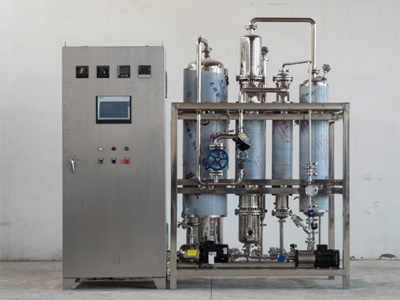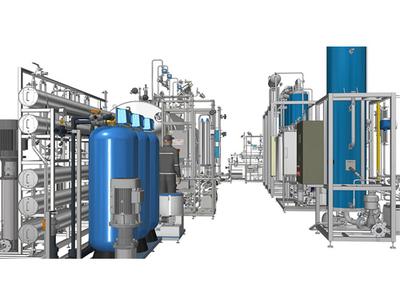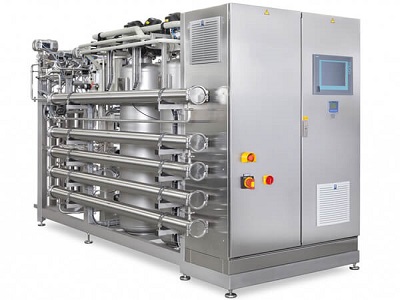Water for Injection (WFI) is the gold standard for purity in the pharmaceutical industry. Whether you're manufacturing injectable drugs, preparing medical devices, or ensuring sterile processes, WFI systems are the backbone of high-quality production. This guide dives deep into what WFI systems are, how they work, and why they’re critical for pharmaceutical manufacturing. We’ll cover the ins and outs of WFI generators, WFI generation systems, and water for injection plants, offering practical insights and tips to help you choose the right system for your needs.
Water for Injection (WFI) is ultra-pure water used in pharmaceutical manufacturing, particularly for injectable medications and medical devices. It’s free from microbial contaminants, endotoxins, and chemical impurities, meeting strict standards set by pharmacopeias like the United States Pharmacopeia (USP), European Pharmacopoeia (EP), and Chinese Pharmacopoeia. WFI is used as a solvent or diluent for drugs administered intravenously, intramuscularly, or subcutaneously, and as a cleaning agent for equipment and packaging.
The stringent purity requirements for WFI ensure patient safety by preventing infections or adverse reactions from contaminants. Even trace impurities can compromise a drug’s efficacy, making WFI systems a non-negotiable investment for pharma companies.
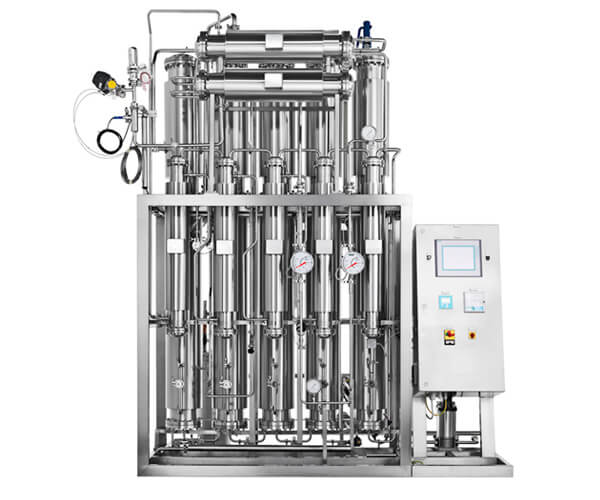
WFI systems are the heart of pharmaceutical production because they ensure the water used meets the highest safety and quality standards. Here’s why they matter:
Patient Safety: Contaminants in water can cause severe reactions, like infections or endotoxic shock, in patients receiving injectable drugs.
Regulatory Compliance: WFI systems must comply with Good Manufacturing Practices (GMP), FDA, and pharmacopeia standards to pass inspections and avoid costly recalls.
Versatility: Beyond drug formulation, WFI is used for cleaning equipment, sterilizing medical devices like wound dressings, and even in biopharmaceutical processes like cell culture.
Investing in a reliable WFI generation system can save millions in potential regulatory fines and protect brand reputation by ensuring consistent compliance.
A WFI generation system produces water that meets pharmacopeia standards through advanced purification processes. The two primary methods are distillation and membrane-based systems. Let’s break them down.
Distillation is the traditional method for producing WFI, relying on a phase change (water to steam and back to liquid) to remove impurities. Here’s how it works:
Pretreatment: Feed water is filtered to remove large particles and suspended solids using sand or cartridge filters.
Vaporization: Water is heated in a distillation column, turning it into steam to separate it from contaminants like endotoxins and salts.
Condensation: The steam is condensed back into liquid, producing WFI that’s free from pyrogens and microbes.
Types of Distillation:
Multiple-Effect Distillation (MED): Uses multiple columns to reuse steam, improving energy efficiency. Ideal for large-scale water for injection plants.
Vapor Compression Distillation (VCD): Compresses vapor to increase efficiency, suitable for smaller facilities.
Since 2017, the European Pharmacopoeia has allowed membrane-based methods (like reverse osmosis combined with ultrafiltration) as an alternative to distillation. Here’s the process:
Pretreatment: Removes large particles and chlorine using filters and activated carbon.
Reverse Osmosis (RO): Forces water through a semi-permeable membrane to remove dissolved salts and impurities.
Electrodeionization (EDI): Further purifies water by removing residual ions.
Ultrafiltration (UF): Removes endotoxins and microbes to meet WFI standards.
Insight: Membrane-based WFI generation systems are gaining popularity due to their lower energy consumption and smaller footprint, making them a sustainable choice for modern facilities.
Method | Pros | Cons |
|---|---|---|
Distillation | Reliable, intrinsically safe, produces high-purity WFI | Energy-intensive, larger footprint, higher operating costs |
Membrane-Based | Energy-efficient, compact, lower operational costs | Requires continuous monitoring for membrane integrity, risk of biofilm |
Choosing between distillation and membrane-based systems depends on your facility’s scale, budget, and sustainability goals. Smaller facilities may prefer membrane systems, while large-scale water for injection plants often stick with distillation for reliability.
A WFI system comprises several critical components to ensure consistent production and storage of high-purity water:
Pretreatment Units: Filters (sand, cartridge) and softeners to prepare feed water.
Purification Units: Distillation columns or RO-EDI-UF modules for WFI production.
Storage Tanks: Stainless steel tanks (316L) with ozone or heat sanitization to prevent microbial growth.
Distribution Loops: Piping systems designed to maintain WFI quality during transport, often with continuous circulation and sanitization.
Control Systems: Automated systems for monitoring water quality, flow rates, and system performance.
Investing in high-quality 316L stainless steel components with electropolished surfaces minimizes contamination risks and extends system lifespan.
Selecting the right WFI generator depends on several factors:
Production Capacity: Small facilities may need 200–500 L/h, while large water for injection plants require 5,000–30,000 L/h.
Energy Efficiency: Membrane-based systems save energy but require robust monitoring. Distillation is reliable but costlier to operate.
Regulatory Requirements: Ensure the system complies with USP, EP, and local standards like GMP and FDA.
Space Constraints: Membrane systems have a smaller footprint, ideal for compact facilities.
Budget: Balance upfront costs (CAPEX) with long-term operational costs (OPEX). Membrane systems often have lower OPEX.
Work with a supplier like Biocell Pharma, who offers modular, customizable WFI generation systems that balance efficiency, compliance, and scalability.
Maintaining a WFI system is critical to ensure consistent water quality and regulatory compliance. Key practices include:
Regular Sanitization: Use thermal (hot water/steam) or chemical (ozone) sanitization to prevent biofilm and microbial growth.
Membrane Monitoring: For membrane-based systems, regularly check for membrane degradation and perform integrity tests.
Validation: Conduct Installation Qualification (IQ), Operational Qualification (OQ), and Performance Qualification (PQ) to meet GMP requirements.
Testing: Regularly test WFI for endotoxins, microbial counts, and conductivity to ensure compliance with USP and EP standards.
Sustainability is a growing concern in pharmaceutical manufacturing. Here’s how WFI generation systems can align with green initiatives:
Energy Efficiency: Membrane-based systems use up to 50% less energy than distillation.
Water Conservation: Advanced pretreatment reduces water waste during purification.
Carbon Footprint: Cold WFI systems lower greenhouse gas emissions compared to traditional distillation.
Modular Design: Systems like Biocell’s WFI generators are modular, allowing upgrades without replacing entire units, reducing waste.
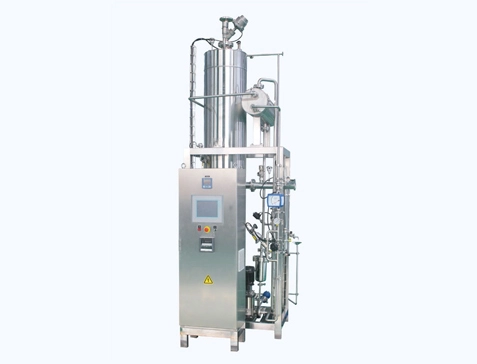
Here are answers to common questions about WFI generation systems, targeting long-tail keywords for SEO:
Q: What is a WFI generator used for in pharmaceuticals?
A: A WFI generator produces ultra-pure water for injectable drugs, medical device sterilization, and equipment cleaning, ensuring compliance with pharmacopeia standards.
Q: How does a water for injection plant differ from a purified water system?
A: A water for injection plant produces WFI with stricter purity standards (e.g., <10 CFU/100 ml bacteria, low endotoxins) compared to purified water systems, which are used for non-injectable applications.
Q: Are membrane-based WFI generation systems reliable?
A: Yes, membrane-based WFI generation systems are reliable if properly maintained. They use RO, EDI, and UF to meet USP and EP standards but require continuous monitoring to prevent biofilm.
Q: What is the cost of a WFI generation system?
A: Costs vary based on capacity, technology (distillation vs. membrane), and customization. Contact suppliers like Biocell Pharma for a quote tailored to your needs.
Q: How often should a WFI system be sanitized?
A: WFI systems should be sanitized regularly, typically with hot water (≥121°C) or ozone, depending on the system. Weekly or biweekly sanitization is common to prevent microbial growth.
Q: Can a WFI generation system produce both WFI and pure steam?
A: Yes, some WFI generation systems, like vapor compression distillers, can produce both WFI and pure steam simultaneously, optimizing efficiency for facilities needing both.
Q: What are the maintenance challenges of a water for injection plant?
A: Challenges include preventing biofilm, monitoring membrane integrity (for cold systems), and ensuring consistent validation. Automated systems can simplify maintenance.
United States Pharmacopeia (USP). “Water for Injection.” USP-NF.
European Pharmacopoeia (Ph. Eur.). “Monograph 0169: Water for Injections.”
Biocell Pharma. “WFI Generation Systems.” https://www.biocell-pharma.com
Syntegon. “Membrane-based Pure Media Systems.” https://www.syntegon.com
BWT. “Water for Injection Systems.” https://www.bwt.com
Bram-Cor. “Methods for Producing Water for Injection.” https://waterforinjection.com
Veolia Water Technologies. “Cold WFI: A Sustainable Alternative.” https://www.veoliawatertech.com
FDA. “Guide to Inspections of High Purity Water Systems.” https://www.fda.gov
